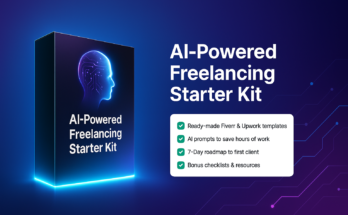As language models continue to evolve, OpenAI’s GPT series has consistently been at the forefront of advancements. With GPT-3 being the latest breakthrough, many are anticipating the release of GPT-4. Chat GPT 4’s Enterprise Capabilities: What You Need to Know About OpenAI’s Newest Language Model In this article, we will explore the enterprise capabilities of Chat GPT 4, its parameters, release date, and more.
What is GPT-4?
GPT-4 is the upcoming successor of GPT-3, which is currently the largest language model in production. With GPT-4, OpenAI aims to address the limitations of GPT-3 by improving its accuracy, speed, and overall capabilities.
GPT-4 Parameters
The parameters of a language model determine its complexity and performance. Chat GPT 4’s Enterprise The more parameters a model has, the more complex and accurate it is. GPT-3 has 175 billion parameters, making it the largest language model in production. However, it is expected that GPT-4 will have even more parameters, which will allow it to generate more human-like responses.
GPT-4 OpenAI: What We Know So Far
OpenAI has been tight-lipped about GPT-4, but it is expected that it will be a significant improvement over GPT-3. OpenAI has stated that GPT-4 will be more efficient, accurate, and capable of understanding complex language patterns. Chat GPT 4’s Enterprise Additionally, OpenAI has also stated that GPT-4 will be optimized for enterprise applications, making it an ideal tool for businesses and organizations.
GPT-3 vs GPT-4: What Are the Differences?
GPT-4 is expected to surpass GPT-3 in terms of performance and capabilities. One major difference between the two models is the number of parameters. GPT-3 has 175 billion parameters, while GPT-4 is expected to have even more parameters. Additionally, GPT-4 optimized for enterprise applications, which will allow it to generate more accurate and relevant responses to business-related queries.
GPT-4 Release Date: When Can We Expect It?
OpenAI has not yet announced a release date for GPT-4. However, based on the release patterns of previous GPT models, it is expected that GPT-4 will be released sometime in the next few years. Additionally, OpenAI has stated that GPT-4 is currently in development and is expected to be released in the near future.
GPT-4 Demo: What Can We Expect?
OpenAI has not yet released a demo of GPT-4. However, based on the performance of GPT-3, it is expected that GPT-4 will be capable of generating highly accurate and relevant responses to complex queries. Additionally, GPT-4 is expected to be optimized for enterprise applications, which will allow it to generate more relevant and accurate responses to business-related queries.
GPT-4 Twitter and Reddit: What Are People Saying?
Since GPT-4 has not yet been released, there is currently limited information available on Twitter and Reddit. However, many people are anticipating the release of GPT-4 and are eager to see its performance and capabilities. Additionally, some experts have shared their opinions on GPT-4 and have stated that it has the potential to revolutionize the field of natural language processing.
How Will GPT-4 Benefit Enterprises?
GPT-4 is expected to be optimized for enterprise applications, which will allow it to generate more accurate and relevant responses to business-related queries. This will enable businesses and organizations to automate their customer support, streamline their data analysis processes, and improve their overall efficiency. GPT-4 can be used for a variety of enterprise applications, such as chatbots, virtual assistants, data analysis tools, and more. By leveraging the power of GPT-4, businesses can save time and resources while providing their customers with accurate and personalized responses.
GPT-4’s Role in Data Analysis
GPT-4 can also play a significant role in data analysis. With its advanced natural language processing capabilities, Chat GPT 4’s Enterprise GPT-4 can analyze and understand large amounts of data, including text, speech, and images. This can be particularly useful for businesses that deal with large volumes of data, as GPT-4 can help automate the analysis process and provide more accurate insights.
The Importance of SEO-Optimized Content for GPT-4
As GPT-4 is optimized for enterprise applications, it is important to create content that is SEO-optimized for the model. This means using relevant keywords, meta descriptions, and headlines that are optimized for GPT-4. By creating content that is optimized for GPT-4, businesses can improve their search engine rankings and ensure that their content is more visible to their target audience.
Conclusion
GPT-4 is expected to a significant breakthrough in the field of natural language processing, with its improved performance, speed, and overall capabilities. Its optimization for enterprise applications will make it an ideal tool for businesses and organizations Chat GPT 4’s Enterprise looking to improve their customer support, data analysis, and overall efficiency. By leveraging the power of GPT-4, businesses can save time and resources while providing their customers with accurate and personalized responses.
FAQs
- When will GPT-4 be released? OpenAI has not yet announced a release date for GPT-4.
- How many parameters will GPT-4 have? It is expected that GPT-4 will have more parameters than GPT-3, which has 175 billion parameters.
- What is GPT-4’s role in data analysis? GPT-4 can help automate the data analysis process and provide more accurate insights.
- Why is SEO-optimized content important for GPT-4? SEO-optimized content can improve search engine rankings and ensure that content is more visible to the target audience.
- What can businesses use GPT-4 for? GPT-4 for a variety of enterprise applications, such as chatbots, virtual assistants, data analysis tools, and more.



